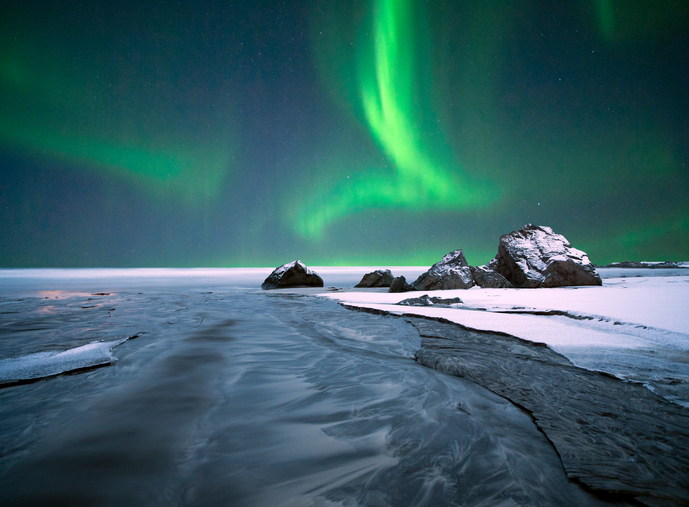Melting Arctic Ice Could Mean Faster Internet for Some
Leave a Comment Have you ever wondered how an e-mail reaches your inbox from a co-worker in Europe? Or how a Facebook message gets to you from a cousin in Africa?
Have you ever wondered how an e-mail reaches your inbox from a co-worker in Europe? Or how a Facebook message gets to you from a cousin in Africa?
The answer lies beneath the ocean. More than 745,000 miles of submarine cables featuring optical fiber make up most of the actual physical internet. These cables wind between and around continents, carrying almost all of our global internet communication.
Recently, the huge amount of data sent between connected smart devices has begun clogging this network of submarine cables, just as interstate highways become jammed with traffic. One way to deal with this massive data growth is to increase the bandwidth capacity of the physical internet. Another way is to create more direct transmission paths between continents.
Taking It Direct
A new project in Finland hopes to use this second method. The plan is to install a new fiber optic cable route across the Arctic Ocean – the only large water body that is really untouched by submarine cables. While melting sea ice raises tremendous concerns for the health of our planet, it presents an entirely new opportunity to install digital links on a straight course between continents.
For data from Asia to reach Europe, it must travel over thousands of cable miles around Asia, up through the Suez Canal and across the Mediterranean Sea into continental Europe. And while this occurs faster than the blink of an eye (about 253 milliseconds), researchers say that data and communication could travel 30 percent faster over a shorter, more direct cable route through the Arctic.
Faster Connections Are Key
Banks and financial trading groups eagerly await faster connections. Traders depend on powerful, low latency networks to buy and sell securities where milliseconds can affect profit and loss. However, big data would also benefit. Today, internet-connected devices outnumber people on the Earth by an almost 3 to 1 margin. And experts predict that internet traffic between Europe and Asia will triple in the next five years.
The Challenges
The deployment of this new cable would actually extend an existing cable route through Finland into Germany. And while a feasibility study by the Government of Finland calls the project a “win-win-win” for Europe, Russia and Asia, there are key areas of concern.
First, constructing this new cable route would cost nearly a billion Euros. Secondly, the icy Arctic terrain and harsh weather conditions would certainly present logistical challenges. And there are always issues involving security. However, a separate cable installation linking Tokyo and London by way of Alaska and Canada is already underway.
Our planet needs more almost supersonic connections. We can expect to see more efforts around the globe to reduce data “pile-ups” and speed the delivery of data and communication.

